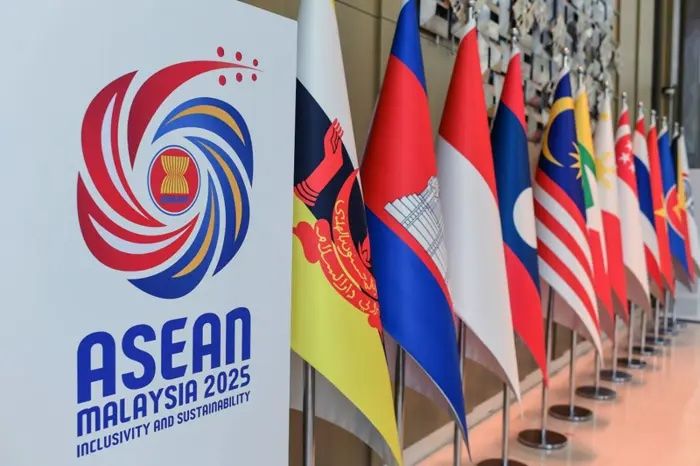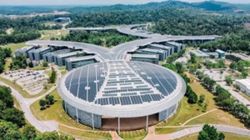
Concurrent with the high-level discussions revolving around the JS-SEZ, various pragmatic initiatives have the potential to fortify the relationship between Johor and Singapore.
A special economic zone (SEZ) is a designated territory intended to attract government-favoured economic activities.
The attractiveness of SEZs lies in the clustering effects, where companies in related fields are concentrated within the same subzones.
For instance, the Johor government may prioritise sectors such as the digital economy, electronics, green economy and logistics for the Johor-Singapore SEZ (JS SEZ).
Based on the size and area designated for the SEZ, it can be divided into subzones catering to specialised sectors.
This clustering allows companies to leverage each other and facilitate knowledge spillover, collaboration and networking.
Additionally, supporting industries can better serve these companies due to their proximity.
SEZs are not a new concept, with various economic zones existing worldwide.
Notable SEZ examples in Asia include Suzhou Industrial Park, Incheon Free Economic Zone and Shenzhen Economic Zone.
In Malaysia, existing economic zones include the Northern Corridor Economic Region, East Coast Economic Region, Sarawak Corridor of Renewable Energy, Sabah Development Corridor and Iskandar Malaysia.
The JS-SEZ presents a promising opportunity for Singapore and Johor to foster a mutually beneficial business environment by capitalising on the complementary strengths of both regions.
Since the signing of the memorandum of understanding on Jan 11, 2024, officials from both sides have collaborated to outline the implementation framework for the zone.
Notably, leveraging the arbitrage between Johor and Singapore is not a new concept.
However, with major infrastructure projects such as the Johor Baru-Singapore Rapid Transit System, double-track rail and potentially the Kuala Lumpur–Singapore High-Speed Rail in the offing, now is an opportune time to reassess the potential benefits that JS-SEZ can bring.This assessment is particularly important from the perspectives of time, space and the daily lives of the transient workforce and residents in Johor Baru.
The potential impact of the JS-SEZ on Malaysians, particularly in Johor, and the measures that the government could implement to address any effects, warrant careful consideration.
Employment and educational needs
The aggregation of companies is anticipated to provide substantial employment opportunities for the local populace.
This is expected to result in an upsurge in employment prospects within prioritised sectors.
Governmental bodies, industries, and local educational institutions must collaborate to facilitate opportunities for the enhancement and retraining of the existing workforce.
These concerted efforts are anticipated to bolster the earning potential of the local population and mitigate the unemployment rate.
These educational opportunities must be readily accessible and economically feasible, available at both skilled technical and vocational education and training institutions as well as universities.
Collaborative initiatives of this nature are anticipated to mitigate the current challenges of aligning graduates with available job positions.
The existing wage discrepancy between Johor Baru and Singapore has led to an outflow of skilled labour to Singapore, predominantly from sectors such as food and beverage (F&B).
Both countries should deliberate on the establishment of a unified talent development framework.
This framework should serve as an incentive for employees to partake in certified training within Johor Baru.
Implementing a mandatory minimum period of local employment following the completion of this training before taking up employment in Singapore is envisaged to contribute towards filling local job vacancies.
It will also augment workforce competencies and present novel business prospects to training institutes.
This approach should extend beyond the F&B sector to encompass the manufacturing industry, thereby addressing labour scarcities across diverse sectors, and benefitting both nations.
Quality of life and public services
The projected population influx to Johor, driven by employment opportunities and the presence of a transient workforce in Johor Baru commuting to Singapore, is poised to significantly impact the region’s quality of life.
The influx is expected to heighten demand for goods and services, leading to rising costs for housing and food.
It will also strain public amenities including healthcare, food and water supplies, road networks, transportation, parking facilities and waste management.
The responsibility falls on both federal and local governmental bodies to expand critical public services to accommodate the burgeoning population.
Vital to this task is investment in transportation infrastructure to facilitate the seamless movement of people and vehicles.
Furthermore, advanced pedestrian walkways and improved traffic management mechanisms are integral components to enhance the city’s overall infrastructure.
The far-reaching impacts of infrastructure investment are known to yield a multiplier effect on productivity and investments.
Notably, the landscape of residential properties is bound to evolve to meet the evolving demands in Johor.
Distinct housing and service requirements for the transient workforce will emerge, which differ from those of permanent residents.
Environmental impact
The anticipated rapid expansion of industries and population is poised to have a substantial impact on the environment.
Swift construction activities often lead to heightened air and noise pollution, thereby compromising local air quality and exacerbating traffic congestion and inadequate drainage systems.
This insufficiency can result in flash floods, leading to further disruption within communities and infrastructural damage.
Furthermore, local ecosystems are susceptible to encroachment, posing a threat to wildlife biodiversity and natural habitats.
To address these challenges, the development of JS-SEZ must integrate sustainable practices and green technologies to mitigate its environmental footprint.
Initiatives such as the implementation of efficient waste management systems, utilisation of eco-friendly building materials and investment in advanced drainage solutions must be embraced.
Additionally, the preservation of green spaces and the integration of natural areas within JS-SEZ are essential for upholding local biodiversity.
By prioritising these measures and continually monitoring environmental impacts, JS-SEZ can effectively work towards alleviating detrimental effects and fostering a harmonious coexistence between industrial growth and ecological preservation.
EPF contributions
To better support Malaysian workers employed in Singapore during their retirement, the relevant Malaysian authorities and the Employees Provident Fund (EPF) must establish a collaborative framework with the pertinent authorities in Singapore.
This framework should mandate Malaysian workers to contribute to EPF while working in Singapore.
The compulsory measure will facilitate the accumulation of savings for Malaysian workers, enabling them to enjoy a dignified standard of living in retirement.
Developing tourism opportunities
Finally, there exists potential for the increased promotion of tourism through collaborative efforts.
Authorities on both sides should engage in the creation of tourism products that highlight local culture and art.
Public exhibitions of local artists and the facilitation of experiential tourism activities can serve to foster greater interaction between tourists and locals.
This move will, ultimately, contribute to the creation of a more vibrant community.
Placemaking initiatives are poised to play a pivotal role in this endeavour by enabling the development of creative spaces that have the capacity to attract and engage both visitors and locals, thus promoting a sense of pride in the local culture while yielding significant economic benefits.
In summary, concurrent with the high-level discussions revolving around the JS-SEZ, various pragmatic initiatives have the potential to fortify the relationship between Johor and Singapore.
Measures such as the enhancement of facilities for the transient workforce, the upskilling of local workers, the encouragement of EPF contributions for Malaysians working in Singapore and the cultivation of tourism products can collectively act to reinvigorate the local economy.
However, the actualisation of this potential necessitates coordinated efforts involving government authorities at the federal and local levels, the private sector and the local community.
K L Chin is a lecturer in real estate at the Henley Business School Malaysia, while Dr Janice Lee Yim Mei is an associate professor in real estate at the same institution. The views expressed here are the writers’ own.











































